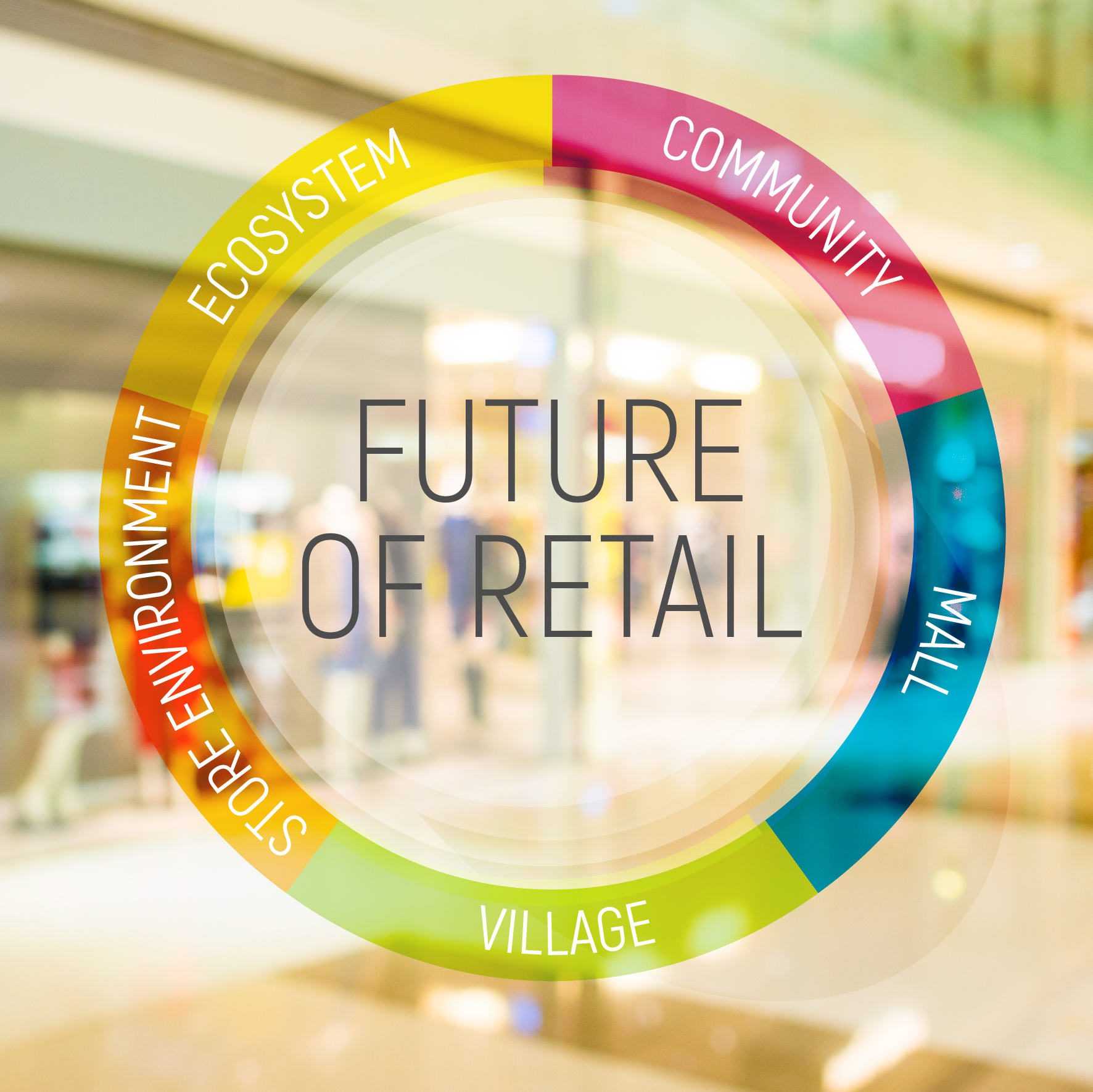The future of retail will be shaped by a hybrid shopping model based on the new normal of highly interconnected experiences that serve specific target markets. Local, personal, smaller, curated, and customized. The cookie-cutter approach of building more and bigger stores does not resonate with today’s consumer mindset. The pandemic has left consumers with a new set of values, a higher expectation of what service means, and very little patience when things don’t go the way they should.
Here is how retail needs to evolve to meet consumer expectations in 2023…and beyond.
The Ecosystem
Consumers increasingly want variety in how, when, and where they shop, and they expect retailers to deliver a memorable environment that addresses their specific needs. Long gone are the days of same-old, same-old; consumers are looking for relevant, curated shopping experiences with abundant, personalized choices.
The Community
As the last few years unfolded, it has become clear that customers expect a retail store to play a stronger role as part of a broader community. The store serves local residents who are also part of its workforce. Even in a chain of a thousand locations, consumers want each store to be different, unique, and special to their community. Savvy retailers and brands are building environments that are targeted at specific local and regional markets. Understanding each market and delivering products and services that meet those customer needs will be the calling card for 2023.
The Mall
Bill Taubman, president and COO of The Taubman Properties was on a recent TRR Retail UnWrapped podcast, Revealing the Future of Malls. He shared that many people questioned if shoppers would return to the malls after over two years of shopping online, the answer is clear: yes. The socialization aspect of shopping in stores and malls cannot be replaced with a transactional experience of shopping online. Instant gratification and being able to touch and feel products are key drivers that keep shoppers going to the stores. Taubman said, “The integration of digital and physical is much greater than it would have been without going through Covid.” He added that the ability to deliver a hybrid shopping experience for consumers can build deep loyalty.
As the last few years have unfolded, it has become clear that customers expect a retail store to play a stronger role as part of a broader community. The store serves local residents who are also part of its workforce. Even in a chain of a thousand locations, consumers want each store to be different, unique, and special to their community.
When asked about the fate of malls, Taubman discussed how consumers are conflicted in that they want the endless aisles that online shopping provides, but at the same time they get overwhelmed by the number of choices. What they really want is a curated shopping experience. On the one hand, the idea of having countless stores to visit is appealing but schlepping through a big mall is not an experience that most consumers want to endure. Malls absolutely have a future according to Taubman, and the ones that are more successful are an active part of the community they serve. Also, malls should look like they belong in the local market. It has been widely reported that entertainment features like movie theaters, amusement rides, museums, and skating rinks are great in-mall activities. According to Taubman, these activities need to be relevant to the local community. For example, consumers in one market may want a marketplace of curated shops while others prefer an entertainment center with escape rooms and video arcades. Others may want wellness facilities including gyms, yoga studios, walk-in clinics, dentists and veterinarians.
Taubman believes mall developers need to deeply understand each individual consumer market and build to its needs and wants. Planning with smart data and analytics ensures decision making to provide the right brands, enough choice and range (price and product assortment). He adds that mall developers and retailers should keep in mind that more is not always better. What works is what customers want, not what retailers think they want.
The Village
Mixed-use spaces with residential, retail, entertainment, restaurants, and services are effective community collaborations. Smaller format stores with curated assortments targeting local communities or specific markets will thrive. Think: charming villages and town squares that offer memorable, more intimate experiences. Larger format stores will serve a market that seeks a flagship experience. Design of mixed-use spaces will support hybrid shopping and accommodate buying online and pick-up in-store, fulfillment strategies, and curbside services. There will be fewer one-size-fits-all spaces and there will be greater versatility in space usage.
The Store Environment
Daniel Hodges, CEO and founder of Retail Store Tours (RST), a Consumers in Motion company, utilizes in-person and virtual experiences to identify opportunities for innovation, performance and revenue improvement for executives leading the Fortune 500 companies. Retail Store Tours operates in 25 markets around the world including the United States, Asia, Europe, and Latin America. Retail Stores Tours has been named the official retail store tour of the NRF 2023. RST has unique real-time insights into the retail landscape of 2023. Here is what Hodges says we can expect from the future of retail:
- Social Media Designed Stores. Winning physical stores are designed for shareable word-of-mouth and social media experiences. “In China and North America, stores, restaurants, and shopping centers are being redesigned for social media sharing and it is working,” said Hodges. “Millions of shared impressions drive in-store and offline sales, traffic, and brand awareness.”
- Family Shopping Places. Stores and restaurants designed for children, teens, and their parents offer flexible opportunities to engage in the physical spaces together as a family or individually. There has never been a more important time to build environments that foster a sense of community, belonging and togetherness. “The shopping mega-center American Dream and Camp have built their brands around shopping family experiences,” added Hodges.
- Five-Senses Experience. Environments activating all five senses will trigger the shopper’s journey in unique and imaginative ways. Grocery stores are at the top of the list for five-sense experiences, according to Hodges.
- Meandering Design. Long, monotonous straight-line aisles of goods stacked from floor to ceiling will be replaced with circular pathways to create environments that foster discovery and exploration. “Shoppers can discover and explore new products and services like an outdoor food market,” said Hodges. “It creates excitement and engagement.”
- Smart Store and Smart Customer Interactions. Hodges believes the state of in-store technology is now equal to customers’ technical prowess. “RFID can be used for frictionless checkout or to find items in a store where you are shopping or at a store nearby, where it can be shipped to your home and office,” he explains. With the growth of hybrid shopping, technological interconnectedness remains a key driver to build smart interactions. QR codes can be used to launch product videos, explain the composition of an item, demonstrate functionality, describe features, or show assembly guidelines. “Salespeople with smart CRM tools can help shoppers find items and check out in the aisle,” said Hodges. Understanding where the consumer is in their readiness for technology is a key consideration for retailers to be able to deliver meaningful enhancements.
Retail’s Exciting Run Into 2023
Retailers have spent the last two years reimagining their merchandising efforts, store design, process, and customer service features. The old playbook is out and a revival of stores is in. The shopper journey and every touchpoint are being examined under a microscope. Higher prices, tighter margins, and smaller profits have challenged retailers to rethink the future. It looks exciting and 2023 will be a great year for retailers to reinvent the shopper journey.




